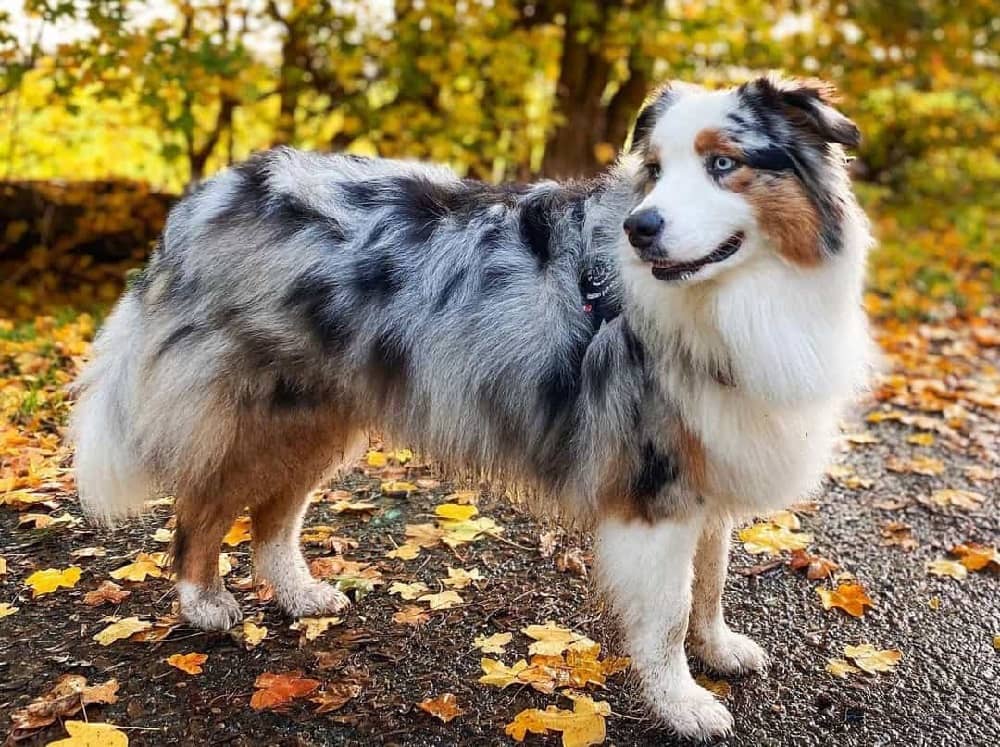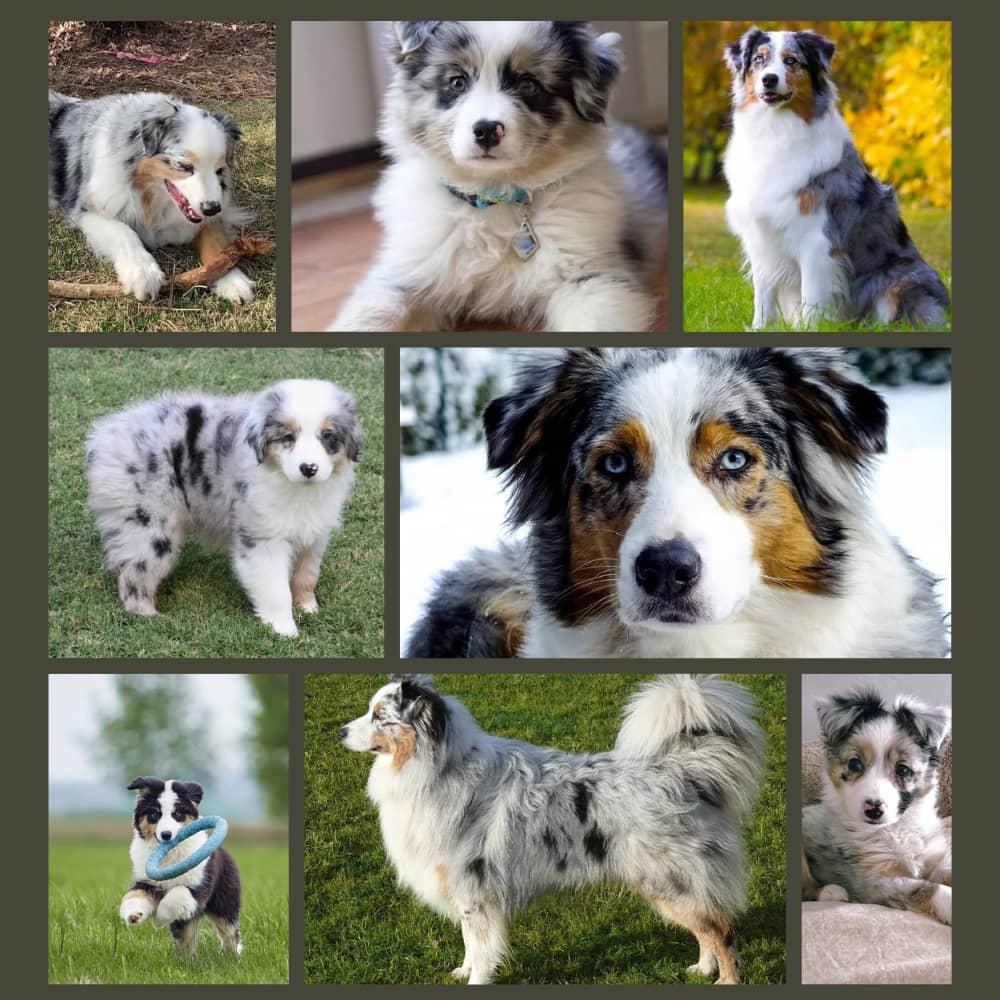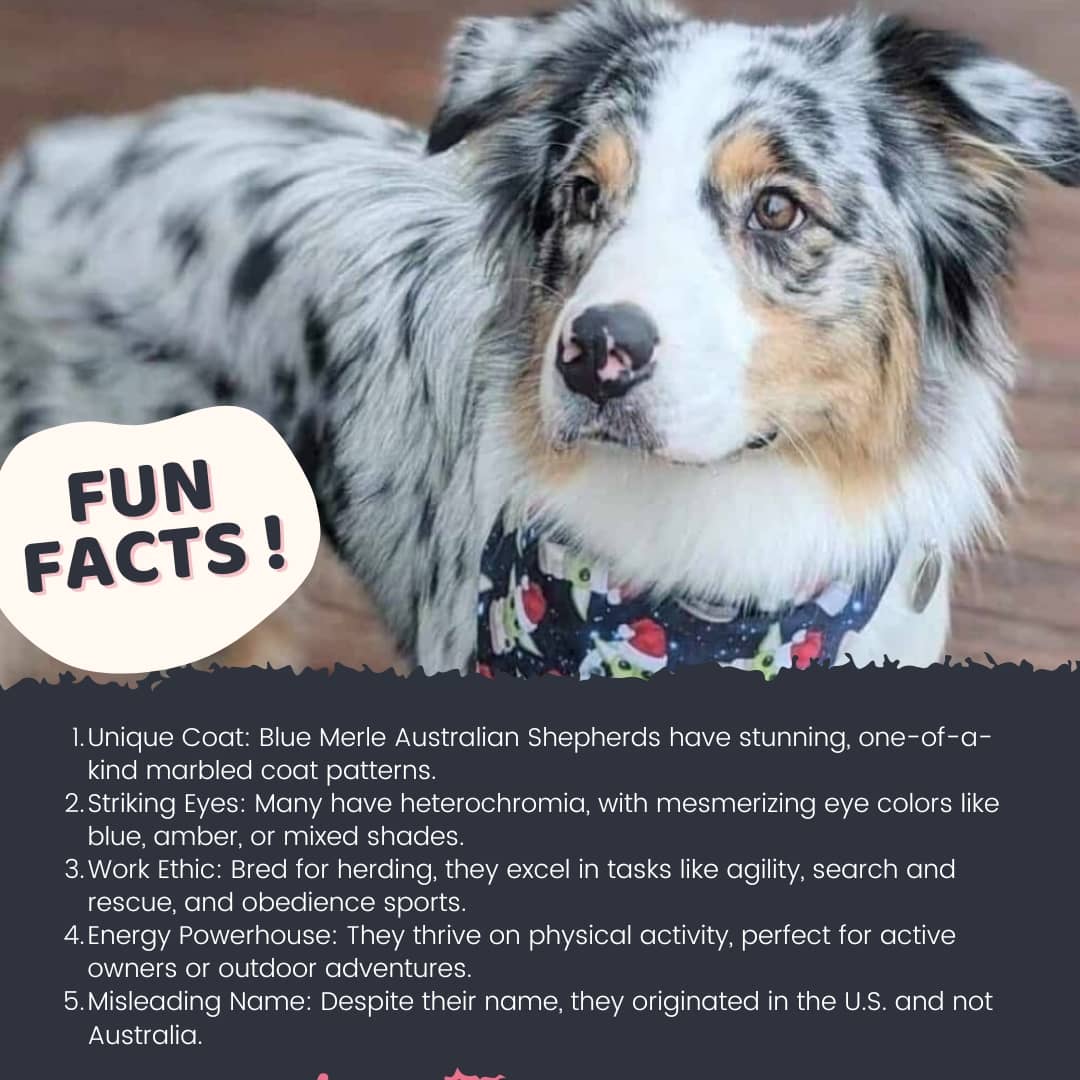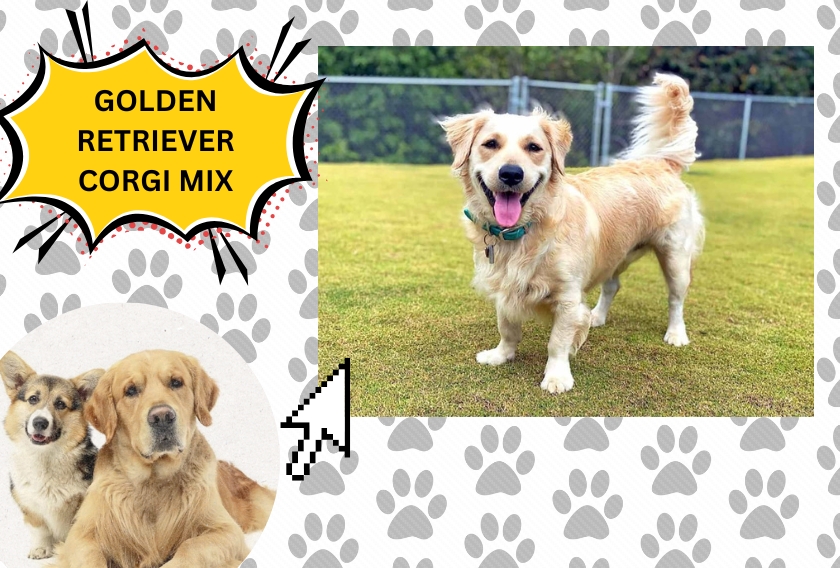The Blue Merle Australian Shepherd, often called the “Aussie,” is an intelligent breed that has gained popularity in the United States. They are known for their striking coat patterns, keen intelligence, and boundless energy. These dogs are the best companions for active families and individuals. This article will tell you about the history, appearance, temperament, care, and health issues of the Blue Merle Australian Shepherd.

The Blue Merle Australian Shepherd is a medium-sized herding dog. They are renowned for their distinctive blue merle coat, a mottled pattern with contrasting shades of blue and black. Their traits have made them a favorite among dog enthusiasts, particularly in the United States.
History and Origin of The Blue Merle Australian Shepherd
Despite its name, the Australian Shepherd was developed in the United States during the 19th century. The breed’s ancestors likely included various herding dogs from Spain and collies imported from Australia and New Zealand. The “Australian” moniker may have originated from these imported sheepdogs. They were initially bred for herding livestock. Aussies became indispensable to ranchers and farmers due to their work ethic and versatility. Their popularity surged in the mid-20th century, thanks in part to rodeo performances and Western films showcasing their talents.
Physical Appearance The Blue Merle Australian Shepherd
Coat and Color
The Blue Merle Australian Shepherd has a double coat with a dense undercoat and a medium-length, weather-resistant topcoat. The blue merle pattern features a marbled blend of black and gray patches. It creates a unique and striking appearance. Each dog’s coat is distinct, with variations in the size and distribution of the merle pattern.
Eye Color
One of the breed’s most captivating features is its eye color. Blue merle Aussies may have blue, brown, amber, or even marbled eyes, where one eye contains multiple colors. It is known as Heterochromia, where each eye is a different color.
Size and Build
Merle Australian Shepherds are well-proportioned, athletic dogs. Males typically range between 20 and 23 inches tall at the shoulder, while females range from 18 to 21 inches. Blue merle Australian Shepherds’ weight varies from 40 to 65 pounds, depending on gender and genetics. They possess a strong, muscular build, reflecting their herding heritage.
Blue Merle Australian Shepherd Pictures

10 Essential Tips For Caring The Blue Merle Australian Shepherd
1. Offer Plenty of Exercises
Make sure they get at least one to two hours of exercise every day to help them burn off their excess energy and maintain mental stimulation.
2. Provide Mental Excitation
To test their bright minds, give them interactive games, puzzle toys, or training activities.
3. Brush Frequently
To control shedding and preserve the beauty of their Blue Merle coat, brush their coat two to three times every week.
4. Interact Early
As puppies, expose them to a variety of people, animals, and settings to avoid shyness or hostility.
5. Engage in Regular Training
For obedience training, use positive reinforcement, and deal with herding behaviors like nipping at a young age.
6. Provide a Well-Balanced Diet
To meet their energy demands, give them premium dog food that is suited to their size, age, and degree of activity.
7. Arrange for Frequent Veterinary Exams
Keep an eye out for breed-specific health problems, particularly those associated with the merle gene, such as hip dysplasia, eyesight impairments, or hearing abnormalities.
8. Establish a Secure Environment
Since they do best in a routine and setting that are in harmony, provide a calm, cozy space for them to unwind in.
9. Defense Against the Weather
The color blue For prolonged outdoor activity, use dog-safe sunscreen because merle coats might be sensitive to sunlight.
10. Express Care and Attention
They require a lot of love, company, and attention with their owners because they are devoted and loving pets.
Temperament and Personality of The Blue Merle Australian Shepherd
Blue Merle Australian Shepherds are intelligent, energetic, and eager to please. They form strong bonds with their families and often exhibit “Velcro” dog tendencies by following their owners closely. Their herding instincts may lead them to gently herd children or other pets. They love being specialized with other people and animals. Therefore, early socialization is important to ensure they interact well with strangers and other animals. Without proper mental and physical stimulation, Aussies can become bored, which can lead to undesirable behaviors.
Training and Socialization of The Blue Merle Australian Shepherd
The Australian Shepherd’s high intelligence and eagerness to please make them highly trainable. You should be consistent to get the best results. Early training should focus on basic commands, socialization, and setting household rules. Aussies excel in advanced training activities such as agility, obedience, and herding trials. They are very hard-working. You should provide them with regular training sessions for their mental stimulation.
The Blue Merle Australian Shepherd Exercise
Aussies are high-energy or energetic dogs. They require substantial daily exercises. They need ideally two hours or more. You can engage them with activities, including running, hiking, playing fetch, or participating in dog sports. Regular physical activity for Merle Australian Shepherd helps prevent behavioral issues stemming from pent-up energy. They thrive in environments where they have a “job” to do, whether it’s herding livestock, participating in agility courses, or even assisting with household tasks. Otherwise, they feel bored and lonely.
The Blue Merle Australian Shepherd Grooming Requirements
The Blue Merle Australian Shepherd’s double coat requires regular grooming to maintain its health and appearance. You need to do weekly brushing. It helps them remove loose hair and prevent matting. During their shedding seasons, more frequent brushing may be necessary. They need regular checkups and cleaning of the ears, teeth, and nails. This is so crucial to provide overall grooming to the Blue Merle Australian Shepherd to prevent infections and maintain overall health.
Health Considerations
Common Health Issues
Merle Australian Shepherds are prone to certain genetic conditions, including hip dysplasia, elbow dysplasia, and eye disorders such as cataracts and progressive retinal atrophy. Therefore, it is necessary for you to provide them with regular veterinary check-ups and health screenings for early detection and management of these conditions.
- Hip Dysplasia: A condition where the hip joint doesn’t fit together properly, leading to arthritis.
- Progressive Retinal Atrophy (PRA): A degenerative eye disorder that can cause blindness.
- Deafness: Blue Merle Aussies with a lot of white in their coats may have a higher risk of congenital deafness.
- Epilepsy: A neurological condition that causes seizures in some dogs.
Lifespan
The average lifespan of a Blue Merle Australian Shepherd is between 12 and 15 years. With proper care, nutrition, and regular exercise, many Aussies live well into their teens, maintaining their active and playful nature throughout their lives.
Blue Merle Aussies adapt well to various living situations but thrive in homes with ample space to roam and play. While they can live in apartments, they require frequent outdoor exercise to stay happy and healthy. A securely fenced yard is ideal to prevent them from wandering off in pursuit of a “task.”
Is the Blue Merle Australian Shepherd Right for You?
Blue Merle Australian Shepherd is right for active individuals or families who can meet their exercise and mental stimulation needs. They are ideal for those with experience in training and who enjoy outdoor activities. If you are looking for a loyal, energetic, and intelligent companion, the Blue Merle Aussie might be the perfect fit. However, their high energy levels and grooming needs make them less suitable for those seeking a low-maintenance pet.
Interesting Facts About Blue Merle Australian Shepherd

Frequently Asked Questions
Question: How rare is a blue merle Australian Shepherd?
Answer: Blue merle is not extremely rare but is a distinctive and highly sought-after coat color in Australian Shepherds.
Question: How much do blue Merle Aussies cost?
Answer: Blue Merle Australian Shepherds typically cost between $800 and $2,500, depending on pedigree, breeder reputation, and location.You can get a Blue Australian Merle from local pet stores or through breeders selling online.
Question: Is a blue merle an Australian Shepherd?
Answer: A blue merle is a specific coat color pattern within the Australian Shepherd breed.
Question: What is the rarest Aussie coat color?
Answer: The rarest Aussie coat color is often considered solid red or black without markings.
Question: How long do blue Merles live?
Answer: Blue merles live 12–15 years, the same as other Australian Shepherds, with proper care and health management.
Question: Are Aussies good family dogs?
Answer: Yes, Australian Shepherds are excellent family dogs, known for their loyalty, intelligence, and affectionate nature.
Question: Are Merle Aussies healthy?
Answer: Most Merle Aussies are healthy, but they may have a higher risk of deafness or vision issues, especially if they have a lot of white in their coat.
Question: What is the rarest Aussie animal?
Answer: The rarest Aussie animal could be the Night Parrot, a bird native to Australia, known for its elusive nature.
Question: Do all Merle Aussies have blue eyes?
Answer: No, not all Merle Aussies have blue eyes; they can have brown, amber, or a combination of colors.
Conclusion
The Blue Merle Australian Shepherd is a dog breed that combines beauty, intelligence, and a strong work ethic. Whether as a family pet, a working dog, or a competitor in canine sports, Aussies excel in many roles. By understanding their unique needs and characteristics, you can provide a loving and fulfilling life for this exceptional breed.


